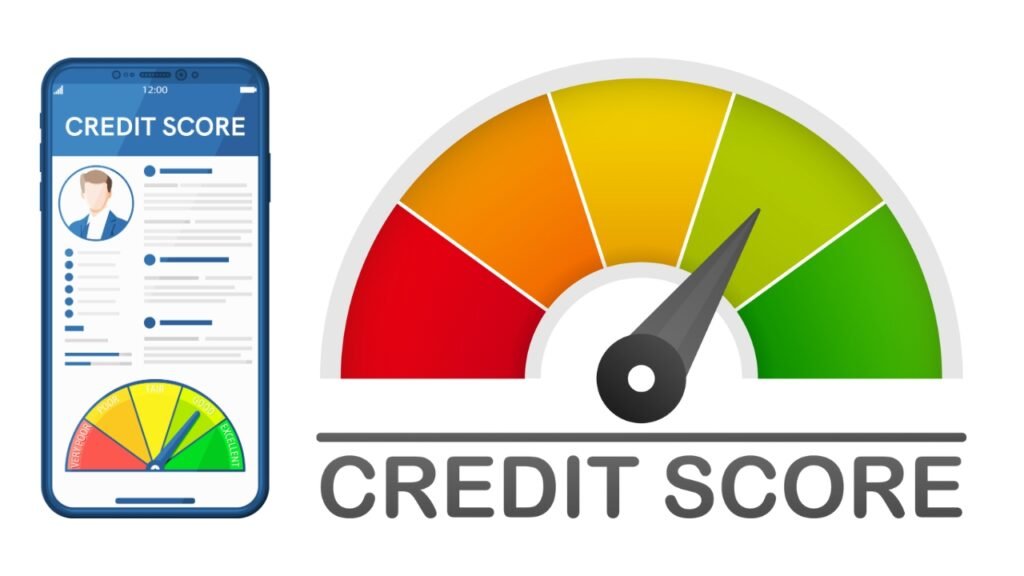Credit Score: Understanding and improving your credit score represents one of the most powerful financial skills you can develop in today’s economy. This three-digit number influences everything from mortgage rates to job opportunities, yet many people remain confused about how credit scoring works and what steps genuinely move the needle toward improvement.
Understanding Credit Scores: The Foundation
Credit scores range from 300 to 850, with higher numbers indicating better creditworthiness. Most lenders consider scores above 700 as good, while scores exceeding 750 typically qualify for the best interest rates and terms available. However, these numbers don’t exist in isolation—they reflect your financial behavior patterns over time.
The scoring system evaluates five primary factors, each carrying different weight in the calculation. Payment history accounts for 35% of your score, making it the most crucial element. This factor examines whether you pay bills on time, how often you miss payments, and how recently any late payments occurred. Even one missed payment can significantly impact your score, especially if you have limited credit history.
Credit utilization represents 30% of your score calculation. This metric measures how much of your available credit you’re actually using. For example, if you have credit cards with a combined limit of $10,000 and carry balances totaling $3,000, your utilization rate is 30%. Lower utilization rates generally indicate better financial management and positively influence your score.
Length of credit history contributes 15% to your score. This factor considers how long you’ve been using credit, the age of your oldest account, and the average age of all your accounts. Longer credit histories typically result in higher scores because they provide more data about your financial behavior patterns.
Credit mix accounts for 10% of your score. This element evaluates the variety of credit types you manage, including credit cards, installment loans, mortgages, and retail accounts. Having different types of credit can positively impact your score, though this factor carries less weight than others.
New credit inquiries make up the remaining 10%. This category tracks how often you apply for new credit accounts. Multiple inquiries within short timeframes can lower your score, as they may indicate financial distress or overextension.
Payment History: The Cornerstone of Credit Health
Establishing and maintaining perfect payment history requires systematic approach and careful attention to detail. Late payments remain on your credit report for seven years, making prevention far more valuable than correction. The impact of late payments depends on several factors: how late the payment was, how recently it occurred, and how many other late payments appear on your report.
Setting up automatic payments represents the most reliable method for ensuring on-time payments. However, autopay alone isn’t sufficient—you must monitor your accounts regularly to ensure adequate funds are available and payments process correctly. Bank holidays, weekends, and processing delays can sometimes cause problems even with automatic systems.
Creating a payment calendar helps you track due dates across all your accounts. Include not just credit cards and loans, but also utilities, rent, and other bills that might be reported to credit bureaus. Many people don’t realize that certain utility companies and landlords report payment information to credit agencies, meaning late payments in these areas can damage your score.
For those already dealing with late payments, the situation isn’t hopeless. Goodwill letters to creditors can sometimes result in late payment removals, especially if you have an otherwise strong payment history. These letters explain the circumstances behind the late payment and request removal as a gesture of goodwill. While success isn’t guaranteed, many creditors will work with customers who demonstrate genuine commitment to improvement.
Credit Utilization: The Balancing Act
Managing credit utilization effectively requires understanding both individual card utilization and overall utilization across all accounts. While keeping total utilization below 30% is commonly recommended, scores typically improve more dramatically when utilization stays below 10%, and the highest scores often belong to people maintaining utilization below 5%.
The timing of your utilization calculation matters significantly. Credit card companies typically report your balance to credit bureaus on your statement closing date, not your payment due date. This means you could pay your balance in full every month but still show high utilization if your balance is high when the statement closes.
Strategic timing of payments can optimize your utilization ratio. Consider making payments before your statement closes to reduce the reported balance. For example, if your statement closes on the 15th and you typically make large purchases early in the month, making a payment on the 10th can significantly reduce your reported utilization.
Multiple payment strategies can help manage utilization throughout the month. Instead of making one large payment, consider making several smaller payments to keep balances low. Some people find success making weekly payments or paying immediately after large purchases to prevent balances from accumulating.
Requesting credit limit increases can also improve utilization ratios, but this strategy requires careful consideration. Higher limits provide more available credit, which can lower your utilization percentage even if your spending remains constant. However, limit increase requests sometimes result in hard inquiries that temporarily lower your score.
Length of Credit History: Time as an Asset
Building credit history length requires patience and strategic thinking. The age of your oldest account significantly impacts this factor, making it crucial to keep your first credit card open even if you don’t use it regularly. Closing old accounts can hurt your score by reducing your average account age and available credit.
However, keeping old accounts open requires ongoing management. Inactive accounts may be closed by the issuer, which can negatively impact your score. Making small purchases on old cards and paying them off monthly keeps accounts active while building positive payment history.
For those just starting their credit journey, becoming an authorized user on someone else’s account can help establish credit history. When added as an authorized user to an account with good payment history and low utilization, you may benefit from that positive history appearing on your report. However, this strategy also carries risks—if the primary account holder makes late payments or carries high balances, your score could be negatively affected.
Student credit cards and secured credit cards provide additional options for building credit history. These products are designed for people with limited credit history and often have more lenient approval requirements. While they may have higher interest rates or fees, they provide opportunities to establish the payment history and credit age that improve scores over time.
Credit Mix: Diversification Benefits
Having different types of credit accounts can positively impact your score by demonstrating your ability to manage various financial responsibilities. However, this doesn’t mean you should seek out unnecessary loans or credit cards just to improve your mix. The key is natural diversification through normal financial activities.
Installment loans, such as auto loans or personal loans, add variety to your credit profile. These loans have fixed payment amounts and definite payoff dates, which differ from revolving credit like credit cards. Successfully managing both types of credit shows lenders you can handle different financial obligations.
Mortgage loans carry significant weight in credit mix considerations. Because mortgages typically involve large amounts and long repayment periods, they demonstrate your ability to manage substantial, long-term financial commitments. However, the decision to buy a home should be based on your overall financial situation, not just credit score improvement.
Retail credit cards and store cards represent another type of credit that can contribute to your mix. While these cards often have higher interest rates and lower credit limits, they can be useful for people building credit history. Just remember that these cards should be used responsibly and paid off regularly to avoid high interest charges.
Managing Credit Inquiries: Strategic Applications
Understanding the difference between hard and soft inquiries is crucial for managing this aspect of your credit score. Hard inquiries occur when you apply for credit and can lower your score by a few points for up to two years. Soft inquiries, such as checking your own credit score or pre-qualification offers, don’t affect your score.
Rate shopping for major purchases like mortgages or auto loans is typically treated favorably by credit scoring models. When you submit multiple applications for the same type of loan within a short timeframe (usually 14-45 days), they’re often counted as a single inquiry. This allows you to compare rates without severely damaging your score.
Timing your credit applications strategically can minimize negative impacts. If you’re planning to apply for a mortgage or auto loan, avoid applying for credit cards or other forms of credit for several months beforehand. This helps ensure your score is as high as possible when you apply for major financing.
Monitoring and Maintenance: Ongoing Vigilance
Regular credit monitoring helps you track your progress and identify potential problems before they become serious issues. Many banks and credit card companies now offer free credit score monitoring, and federal law entitles you to one free credit report annually from each of the three major credit bureaus.
Dispute processes provide mechanisms for correcting errors on your credit report. If you find incorrect information, you can dispute it with both the credit bureau and the company that provided the information. Common errors include accounts that don’t belong to you, incorrect payment histories, and outdated information that should have been removed.
Identity theft monitoring has become increasingly important as data breaches and fraud become more common. Signs of identity theft include unfamiliar accounts on your credit report, unexpected drops in your credit score, and bills for accounts you didn’t open. Quick action is essential if you suspect identity theft.
Long-term Strategies: Sustainable Improvement
Improving your credit score is rarely a quick process, but sustainable strategies can lead to significant improvements over time. Focus on the factors that have the most impact: making payments on time and keeping balances low. These fundamental practices form the foundation of good credit health.
Building emergency funds can prevent credit damage during financial difficulties. When unexpected expenses arise, having cash available means you won’t need to rely on credit cards or skip payments. This financial cushion protects your credit score during challenging times.
Debt consolidation can sometimes help improve credit scores, but it requires careful consideration. Consolidating high-interest debt into lower-interest loans can reduce your overall debt burden and potentially improve your utilization ratio. However, consolidation only works if you don’t accumulate new debt on the accounts you’ve paid off.
Conclusion: Your Path to Financial Freedom
Improving your credit score requires patience, discipline, and consistent effort. While there are no shortcuts to excellent credit, the strategies outlined above provide a roadmap for meaningful improvement. Remember that credit scores reflect your financial behavior patterns, so lasting improvement requires lasting changes in how you manage money.
The benefits of good credit extend far beyond qualifying for loans. Better credit scores can result in lower insurance premiums, better rental opportunities, and even job prospects in some fields. By taking control of your credit score, you’re investing in your overall financial well-being and creating opportunities for a more secure financial future.
Start with small, manageable changes and build momentum over time. Focus on paying bills on time, keeping balances low, and monitoring your progress regularly. With consistent effort and the right strategies, you can achieve the credit score that opens doors to your financial goals and dreams.


